Introduction
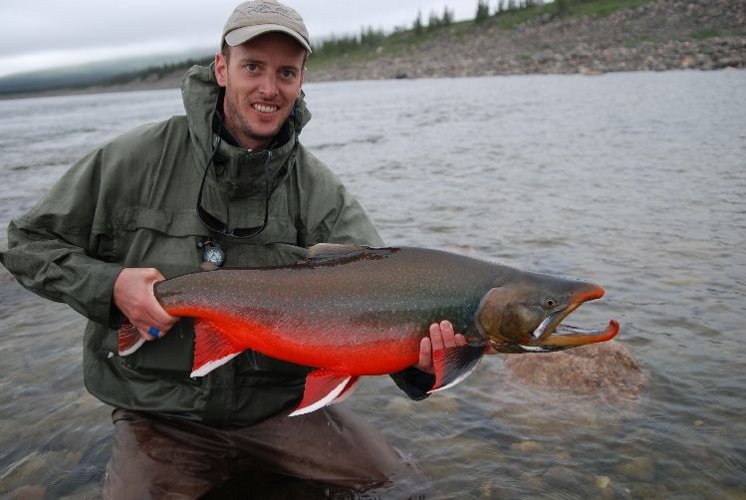
Arctic Char is a fascinating coldwater fish that thrives in subarctic and arctic regions. Known for its adaptability and unique characteristics, Arctic Char has captured the interest of fish enthusiasts and researchers alike. This article delves into the world of Arctic Char, exploring its definition, habitat, physical features, diet and feeding behavior, reproduction and lifecycle, conservation status, as well as its significance in both the ecosystem and culinary world. With its ability to thrive in cold temperatures and its intriguing behavior, Arctic Char is truly a mesmerizing species that warrants further exploration.
Definition And Characteristics Of Arctic Char Fish
Arctic Char (Salvelinus alpinus) is a cold-water fish species belonging to the family Salmonidae. It is primarily found in Arctic and sub-Arctic regions, including alpine lakes and coastal waters. This species has the ability to adapt to various environmental conditions, making it highly resilient. Arctic Char can be either landlocked or anadromous, meaning they migrate between freshwater and saltwater habitats. They are known for their distinct color variations, including shades of red, orange, and silver, which can vary depending on their environment. With their unique characteristics and adaptability, Arctic Char are a fascinating species to study and admire.
Habitat And Distribution Of Arctic Char
Arctic Char (Salvelinus alpinus) is an incredibly adaptable fish species that thrives in cold-water habitats. It can be found in a wide range of environments, including alpine lakes, rivers, and coastal waters in the Arctic and sub-Arctic regions. Arctic Char populations can also be found in landlocked lakes and fjords. These fish have the ability to survive and reproduce in nutrient-poor and oxygen-rich waters, making them well-suited to their Arctic habitats. The distribution of Arctic Char extends across Canada, Greenland, Iceland, Scandinavia, and parts of the United States. They play a vital role in the aquatic ecosystems of these regions.
Physical Features
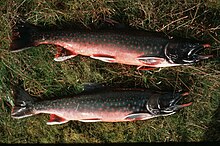
The physical features of Arctic Char are specifically adapted for their cold-water habitat. They exhibit a range of color variations, including silver, gold, and olive-green, which help them blend into their surroundings. Their body structure is streamlined with a slightly forked tail, allowing them to move efficiently through the water. Arctic Char can grow to varying sizes, with adults reaching lengths of up to 2 feet. They have a series of small, sharp teeth that enable them to catch and consume their prey. These physical characteristics contribute to the survival and success of Arctic Char in their challenging environment.
Color Variations And Adaptations Of Arctic Char
Arctic Char exhibits a range of color variations, including silver, gold, and olive-green, which help them blend into their surroundings. This coloration provides camouflage and protection from predators in their cold-water habitat. Additionally, the color variations can vary depending on the season, with darker colors in the colder months and lighter colors in warmer months. The ability to change color helps Arctic Char adapt to different environments and enhances their survival in the challenging Arctic ecosystem. Their physical characteristics, including their streamlined body and sharp teeth, further contribute to their adaptation and success in their cold-water habitat.
Size And Body Structure Of Arctic Char
Arctic Char can vary in size depending on the population and their environment. On average, they range from 40 centimeters to 60 centimeters in length, with some individuals reaching up to 1 meter in length. They have a streamlined body shape, similar to salmon or trout, which allows them to maneuver swiftly through the water. Their body is covered in small scales, and they have a forked tail. Arctic Char also have sharp teeth, which aid in capturing their prey. Overall, their size and body structure are well-adapted for their cold-water habitat.
Diet And Feeding Behavior
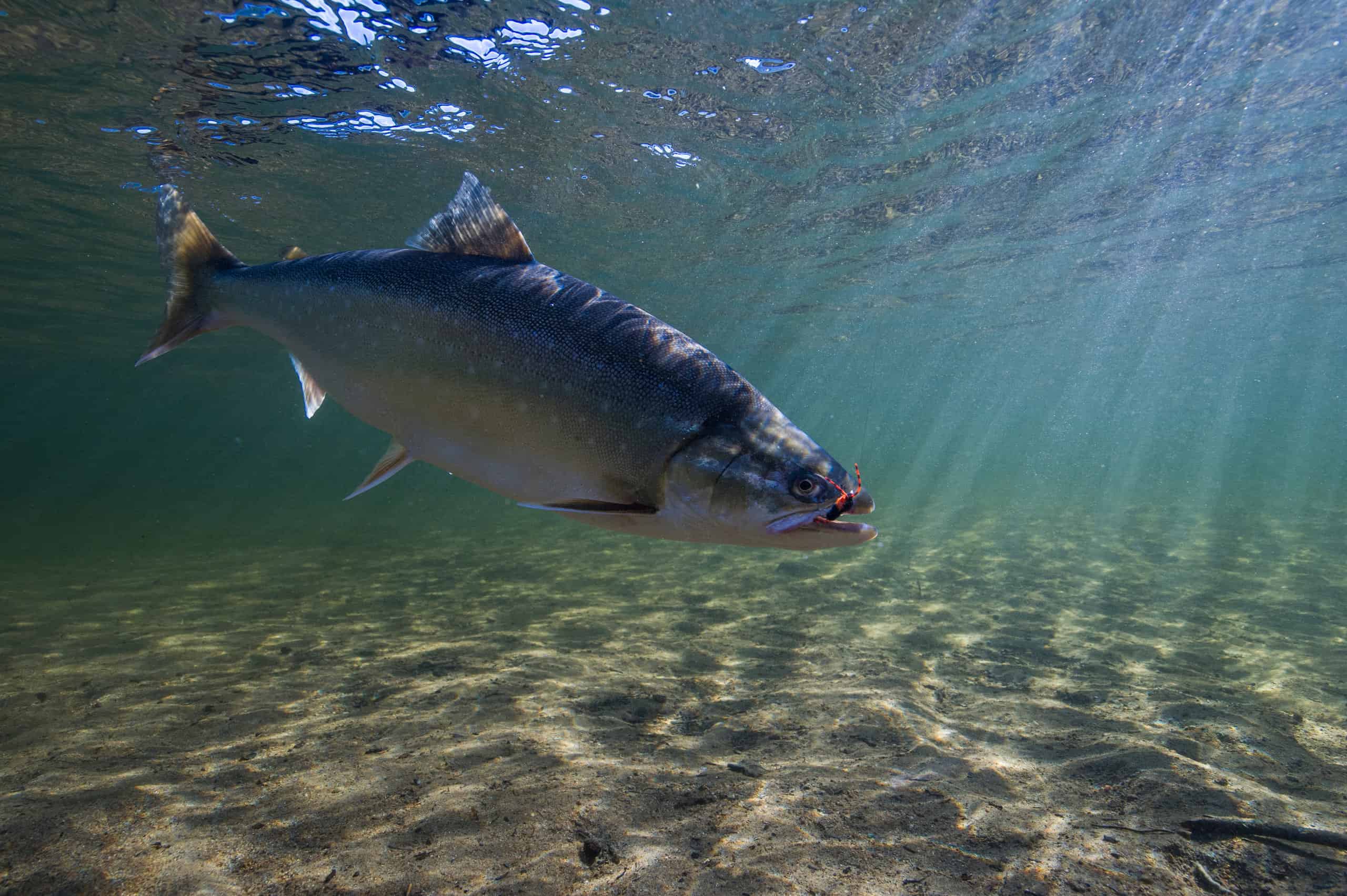
Arctic Char have a diverse diet and adapt their feeding behavior based on their environment and prey availability. They are opportunistic predators, feeding on a variety of organisms including small fish, invertebrates, and insect larvae. During the summer months, they may also feed on surface insects. Arctic Char exhibit feeding behaviors such as stalking, ambushing, and chasing their prey. They are known for their ability to swim swiftly and capture their prey with their sharp teeth. This adaptability in diet and feeding behavior allows Arctic Char to survive in different aquatic ecosystems.
Natural Diet Of Arctic Char
The natural diet of Arctic Char is quite diverse. They are opportunistic predators, feeding on a variety of organisms that are available in their environment. Their diet includes small fish, invertebrates, and insect larvae. During the summer months, they may also feed on surface insects. Arctic Char exhibit different feeding behaviors, including stalking, ambushing, and chasing their prey. Their sharp teeth and ability to swim swiftly help them capture their prey effectively. This adaptability in diet allows Arctic Char to survive and thrive in different aquatic ecosystems.
Feeding Habits And Hunting Techniques Of Arctic Char
Arctic Char exhibit a range of feeding habits and hunting techniques to capture their prey. They are opportunistic predators, adapting their diet to the available food sources in their environment. They are known for their stalking, ambushing, and chasing behaviors, using their sharp teeth and swift swimming abilities to catch their prey effectively. During the summer months, they may also feed on surface insects. Their adaptability and diverse hunting techniques enable Arctic Char to thrive in different aquatic ecosystems. These feeding habits are essential for the survival and growth of the Arctic Char population.
Reproduction And Lifecycle

Arctic Char reproduces through spawning, with females typically laying their eggs in redds, which are nests created in broken substrates or gravel shoals. They spawn every 1-2 years. However, there is still limited knowledge about the specific life history of Arctic Char in Alaska compared to its anadromous relative, the Dolly Varden. The development stages of Arctic Char involve the eggs hatching into fry, which then grow into juvenile fish and eventually reach adulthood. The reproduction and lifecycle of Arctic Char play a crucial role in maintaining the population and ensuring the species’ survival.
Spawning Behavior And Reproduction Cycle Of Arctic Char
The spawning behavior of Arctic Char is an essential part of their reproductive cycle. Females typically lay their eggs in redds, which are nests created in broken substrates or gravel shoals. The spawning usually occurs every 1-2 years. During the spawning season, males develop vibrant colors and compete for females by displaying aggressive behavior. Once fertilization occurs, the female protects the eggs until they hatch. The eggs then develop into fry, grow into juvenile fish, and eventually reach adulthood. This reproductive cycle ensures the continuation of the Arctic Char population.
Development Stages From Egg To Adult Arctic Char
The development stages of Arctic Char from egg to adult involve several crucial milestones. After fertilization, the eggs go through three stages: cleavage, epiboly, and organogenesis. The cleavage phase begins the process by forming multiple cells from the fertilized egg. Next, during the epiboly stage, the embryo starts to grow and shape itself. Finally, the organogenesis phase occurs when the organs begin to develop, preparing the embryo for hatching. Once the eggs hatch, they transform into fry and progress through various juvenile stages before reaching adulthood. These stages ensure the growth and maturation of the Arctic Char population.
Conservation Status
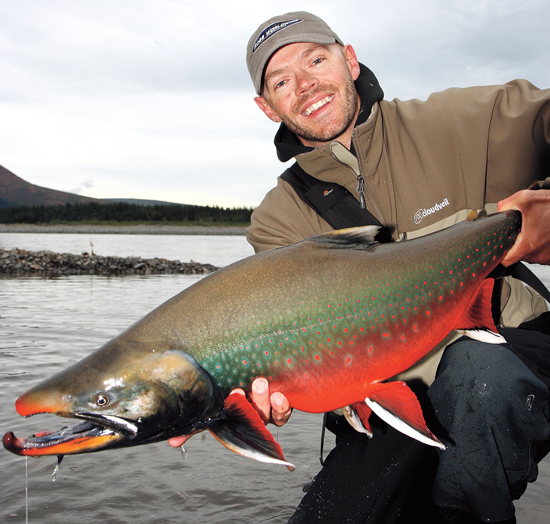
The Arctic Char is currently facing conservation concerns due to various factors. Climate change and habitat degradation pose significant threats to their populations. The warming of Arctic waters disrupts their natural environments and affects their feeding habits and reproduction cycles. Overfishing and pollution also contribute to the decline in Arctic Char populations. Efforts are being made to conserve and protect this species, including implementing sustainable fishing practices, establishing protected areas, and raising awareness about their importance in the ecosystem. These conservation measures aim to ensure the long-term survival of Arctic Char and preserve their unique genetic diversity.
Threats To Arctic Char Populations
Threats to Arctic Char populations include climate change, habitat degradation, overfishing, invasive species, and pollution. The warming of Arctic waters disrupts their natural environments and affects their feeding habits and reproduction cycles. Habitat degradation and pollution also impact their availability of food and suitable breeding grounds. Overfishing can deplete their populations and disrupt the balance of the ecosystem. Invasive species can introduce competition for resources and prey on Arctic Char. These threats collectively pose a significant risk to the survival and abundance of Arctic Char populations. Efforts are needed to mitigate these threats and ensure the long-term conservation of this species.
Conservation Efforts And Protection Measures For Arctic Char
Conservation efforts for Arctic Char involve a combination of habitat preservation, fishing regulations, and research initiatives. To protect their fragile ecosystems, designated conservation areas are established, restricting human activities that may harm their habitat. Fishing regulations limit the catch and enforce catch-and-release practices, ensuring the sustainability of Arctic Char populations. Research programs aim to gather data on their behavior, population dynamics, and threats, which informs conservation strategies. Collaboration between scientists, government agencies, and local communities is essential in implementing effective conservation measures and promoting public awareness about the importance of preserving Arctic Char populations.
Conclusion
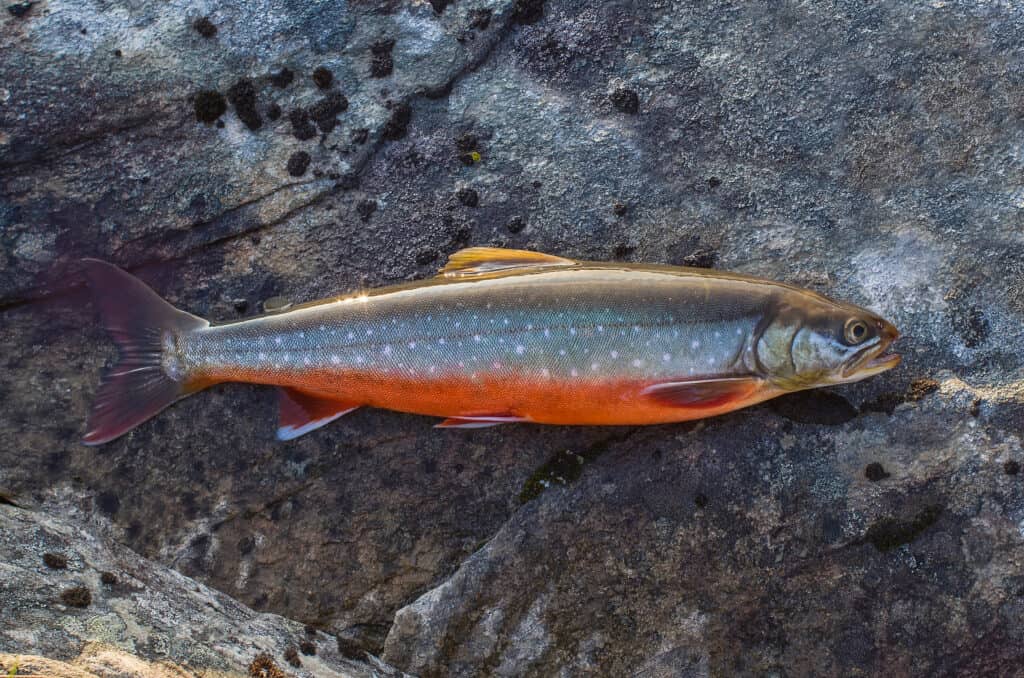
In conclusion, Arctic Char is a remarkable coldwater fish known for its adaptability, vibrant colors, and important role in ecosystems. With its unique habitat requirements and specialized feeding habits, Arctic Char has evolved to thrive in harsh and pristine environments. However, this species faces threats such as habitat degradation and overfishing. To ensure the survival of Arctic Char populations, conservation efforts and protective measures, such as establishing conservation areas and enforcing fishing regulations, are crucial. By promoting awareness and implementing sustainable practices, we can contribute to the preservation of this extraordinary species and its valuable place in the natural world.
Benefits Of Arctic Char In The Ecosystem
Arctic Char plays a crucial role in the ecosystem as a keystone species. Its feeding habits help regulate the populations of smaller fish and invertebrates, contributing to a balanced food web. Moreover, Arctic Char serves as an indicator species, reflecting the overall health of the aquatic environment. Their presence in lakes and rivers indicates a clean and well-preserved habitat. Additionally, Arctic Char provides a food source for larger predators, such as birds and mammals, further sustaining the ecological balance. By maintaining the population of Arctic Char, we can ensure a thriving and diverse aquatic ecosystem.
Culinary Uses And Popularity Of Arctic Char In Cuisine
Arctic Char has gained popularity in cuisine due to its delicate flavor and versatile nature. It is often prepared in similar ways to salmon and trout, such as grilling, baking, or pan-searing. The firm yet tender flesh of Arctic Char lends itself well to various cooking techniques. Its mild taste appeals to seafood enthusiasts as it lies between salmon and trout. Chefs appreciate its unique flavor profile and often incorporate it into dishes, such as salads, risottos, or ceviches. Arctic Char provides a delectable and gourmet option for those seeking a distinctive seafood experience.
FAQ About Arctic Char: Exploring The Coldwater Fish
Q: What is Arctic Char?
A: Arctic Char is a coldwater fish species that belongs to the Salmonidae family, closely related to salmon and trout. It inhabits the northern cold and pristine waters of the Arctic regions, including lakes, rivers, and coastal areas.
Q: What does Arctic Char look like?
A: Arctic Char has a distinctive appearance with a deep, elongated body and small scales. Their coloration varies but typically includes shades of pink, red, orange, and silver. During spawning seasons, males develop vibrant colors and a humped back.
Q: What is the taste of Arctic Char like?
A: Arctic Char has a delicate and mild flavor, often described as a mix between salmon and trout. It offers a rich, buttery taste with a subtle sweetness, making it a popular choice among seafood enthusiasts.
Q: Is Arctic Char a sustainable seafood option?
A: Yes, Arctic Char is known for being a sustainable seafood choice. Farmed Arctic Char is environmentally friendly, as it requires minimal resources and has a low impact on marine ecosystems compared to other fish species.
Q: How can Arctic Char be prepared and cooked?
A: Arctic Char can be cooked in various ways, including grilling, baking, broiling, or pan-searing. It is versatile and pairs well with different herbs, spices, and sauces. Whether smoked, grilled, or poached, Arctic Char is a delicious and nutritious addition to any meal.
Q: What are the nutritional benefits of Arctic Char?
A: Arctic Char is a healthy source of protein, omega-3 fatty acids, vitamins, and minerals. It promotes heart health, brain function, and overall well-being. Consuming Arctic Char can provide essential nutrients that support a balanced diet and a healthy lifestyle.
Q: Where can one find Arctic Char for consumption?
A: Arctic Char is available in select seafood markets, specialty grocery stores, and restaurants that focus on sustainable and high-quality seafood. Additionally, some regions with Arctic Char populations offer opportunities for recreational fishing, allowing enthusiasts to catch their own fresh fish.

Kostas Mediterranean is a family-owned Greek restaurant located in North Vancouver. Our passion for bringing the authentic flavors of Greece to the local community has been the driving force behind our establishment. We take pride in offering a warm and welcoming atmosphere where guests can experience the true essence of Greek hospitality. Our journey began with Kostas, whose culinary skills and love for Greek cuisine inspired the creation of the restaurant. With a desire to share his family recipes and traditions, Kostas set out to create a dining experience that captures the spirit of Greece. The result is a menu that showcases a delightful blend of traditional and modern Greek dishes prepared with the finest and freshest ingredients.